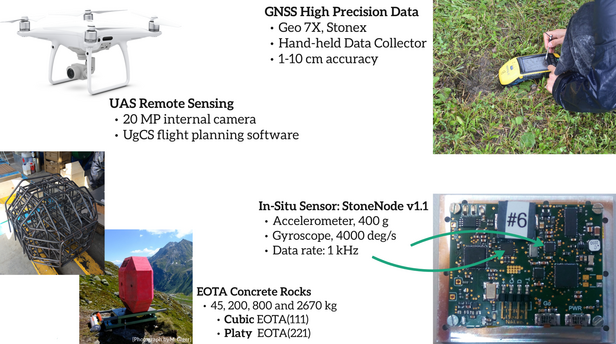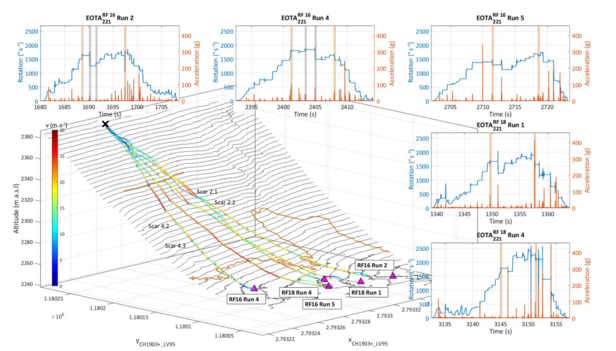Experiments Rockfall – Methods ¶

The aim of rockfall experiments is an in-depth reconstruction of the full set of parameters of interest in singleblock rockfall trajectories. With the applied methodologies a complete kinematic description of a rock’s trajectory in real terrain and is possible and underlies the physical complexity of rock–ground interactions.
In situ accelerometer and gyroscope data are combined with videogrammetric and unmanned aerial-systems mapping techniques to understand the role of rock rotations, ground penetration and translational scarring in rockfall motion. The exhaustive trajectory reconstruction provides information over the complete flight path such as translational velocity vectors, angular velocities, impact duration and forces, ballistic jump heights, and lengths. The experimental data provide insight into the basic physical processes detailing how rotating rocks of general shape penetrate, rebound and scar ground terrain. The data is serving as a calibration basis to enhance RAMMS::ROCKFALL.
The reconstructed trajectories look as presented below for selected EOTA(221) 800 kg blocks travelling down our experimental test site “Chant Sura”. For anyone interested in the details of the reconstruction process and the sensors please consult the links below.
